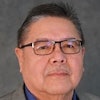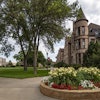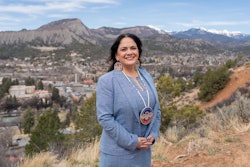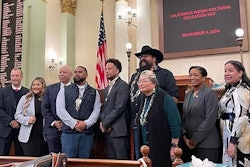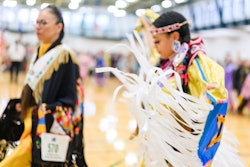LAS VEGAS, N.M. — New Mexico Highlands University is located in a small town where movies such as “No Country for Old Men,” “The Longest Yard,” “North Country” and “Brothers” were filmed. The historic downtown area, which includes the Plaza Hotel and Victorian houses along 7th and 8th streets, make the town an ideal tourist spot.
However, many of the 92 Native students at NMHU complain that there isn’t much to do here in Las Vegas, N.M., on a Saturday night or after a long day of classes.
“They want to live where the entertainment is,” said Teresa Billy, Native American access and retention coordinator at NMHU.
Las Vegas has one movie theater, two parks, a nearby lake, a few shopping areas and a handful of fast food restaurants. Of course, all are accessible to students who have their own vehicles or don’t mind walking a couple of miles.
That is why Billy works with Campus Life to provide movie nights. The program provides a network among the 32 clubs and organizations at NMHU so students can get out of their rooms and have a bit of fun. “We’re one of the few institutions, I think, that really dedicates themselves to helping students,” Billy said.
Billy has an open-door policy and a couch in her office for students who want to talk or just hang out. She is also the sponsor of NMHU’s Native American Club. The club’s goals are to get NMHU Native students involved by hosting various activities that include fundraising events, food sales, bingo and club meetings.
“But how many students do you see walking through that door?” she asked, reflecting on the small number of students who show up and participate. Boredom is part of the reason why students have left Las Vegas and NMHU, Billy said.
“They transfer because they want to be around where there’s a lot more things to do,” she said. Another reason: academics. “A lot of students will go to class and not necessarily perform well and they have to transfer home because of resources” such as scholarships and transportation, she said.
In the fall 2007 semester, there were 106 Native students at NMHU. In spring 2008, the number dropped to 92. That meant 14 Native students did not return, Billy said.
On Feb. 27, the director of College Horizons, which sponsors workshops to prepare Native students for college or graduate school, visited NMHU. Whitney Laughlin gave a short presentation to four or five Native students about going to graduate school. Boxes of free pizza became cold as three more students trickled in at the end of the program.
In 2000 about 650 Native students were in graduate schools nationwide, Laughlin said. “The numbers are getting better and better,” she said.
Retention of students in institutions is key when working with Native students, Laughlin said, who mentioned some of their challenges to staying in school: They’re so used to home and their traditions, and when they step off their land, they are singled out.
“They don’t feel like they belong … from the way classes are taught and the ignorance of other people about Native culture,” she said.
With College Horizons, Laughlin and various institution directors learn from Natives about what Native students need and about their culture. In this program everyone learns, she said.
Though more Natives are going to college, schools have a long way to go in terms of understanding and retaining Native students, Laughlin said. Schools need to let Natives speak out and say what they need and want out of an institution, she added.
“We’re trying to figure out more activities that match and satisfy the students’ wants and needs,” NMHU’s Billy said. “It’s the students who have to help themselves.”
Click here to post and read comments
© Copyright 2005 by DiverseEducation.com

